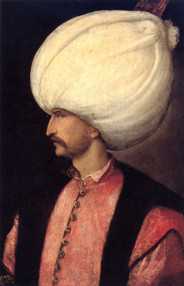Buda Falls into Turkish Hands, the Country is Torn into three Parts – August 29, 1541
Szöveg: hungariandefence.com | 2011. augusztus 29. 13:22Four hundred and seventy years ago, on August 29 of 1541, Sultan Suleiman I took the Castle of Buda by ruse. The country was torn into three parts. We commemorate the historic event by excerpting from the publication of Zrínyi Média entitled „For the Homeland unto Death’ – 1100 Years”, which is available in our Digital Library.
Although European and Hungarian history is studded with struggles amongst various interest groups within the estates, leagues of barons, and between them and the king, the tussles between power groups in the period after 1526 were particularly destructive. The barons put their own narrow ambitions above the interests of the kingdom, ultimately serving nobody except the conquerors. All members of the political elite recognised this danger, but were unable to agree on who should withdraw. They did at least encourage their rulers to come to a settlement. John Szapolyai soon realised that his rule was advancing the Turkish cause, and so he made a secret truce with Ferdinand I in Várad (now Oradea, Romania) in 1538, undertaking to transfer the lands under his rule even in the case of a male successor. Szapolyai did have a son before he died, prompting his followers, led by the man who had guided his political strategy, George Martinuzzi, Bishop of Várad, to refuse to abide by the treaty, and upheld the claim to the throne by the infant John Sigismund (1540–1571).

The fall of Buda to the Ottomans provoked fear and panic in the Austrian and German provinces of the Empire, quite reasonably concerned that they would be Suleyman’s next prey. A 50,000-strong army was assembled, with great effort, out of German, Austrian and Hungarian soldiers and moved at snail’s pace towards Buda. Against an enemy which had had time to prepare, the campaign ended in humiliating failure, without even an attempt to take Buda, and only a half-hearted siege of Pest.
Over the next few years, Suleyman took devastating advantage of the Christian forces’ powerlessness. He reinforced his route along the Danube, and set up a defence zone around Buda. In 1543, he took the castles of Siklós and Pécs in South Transdanubia, Esztergom, with its commanding position on the Danube, and then Tata and Székesfehérvár.